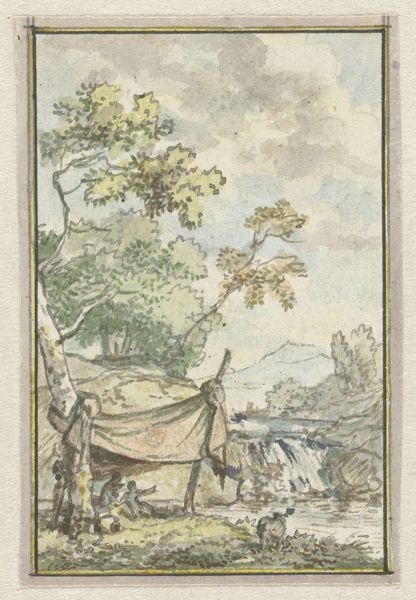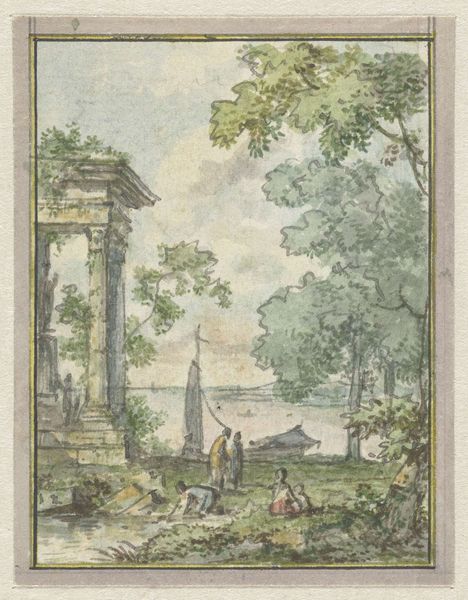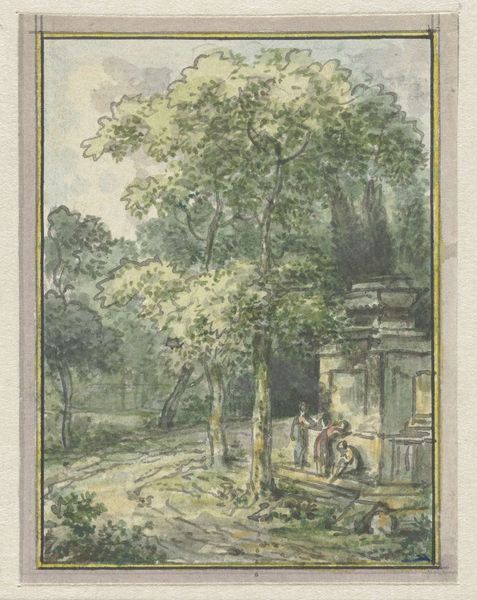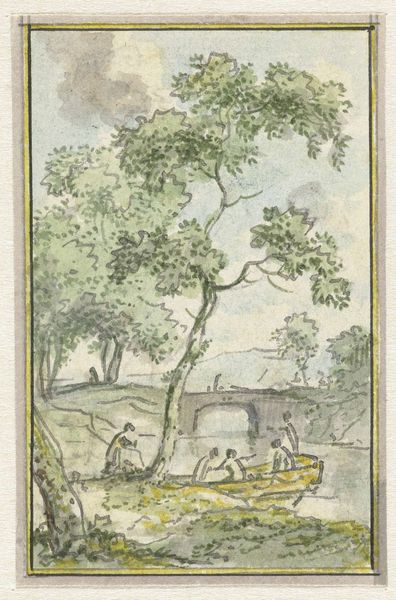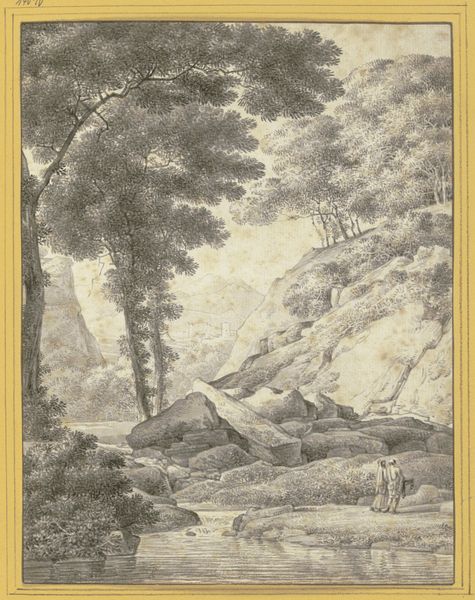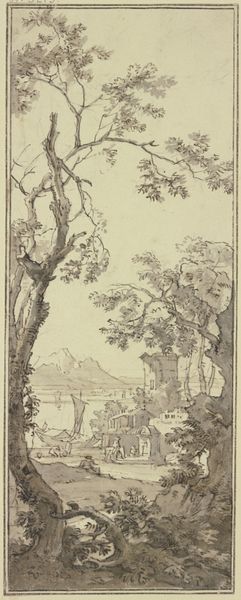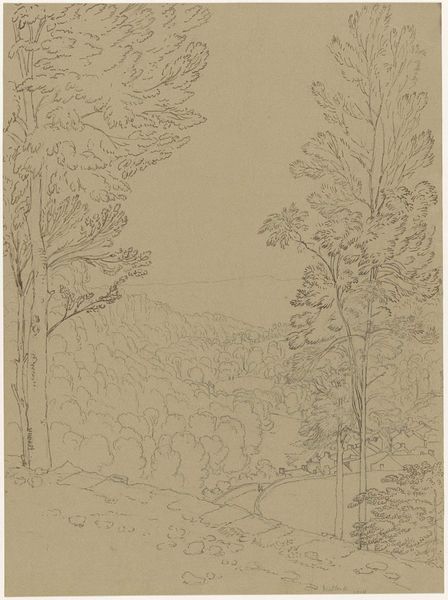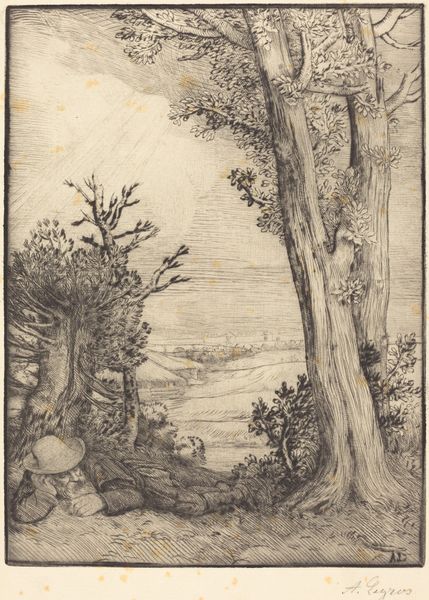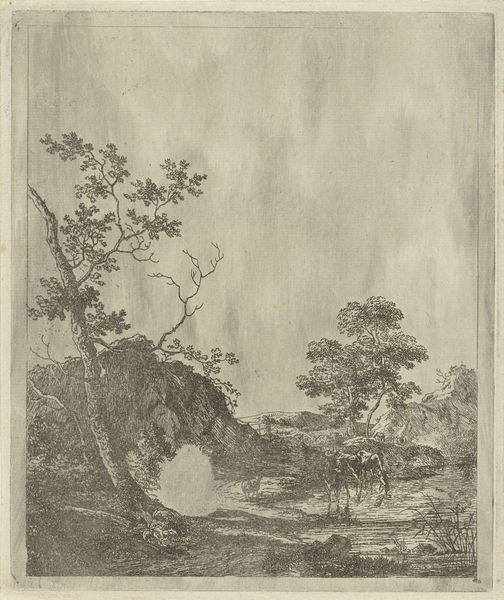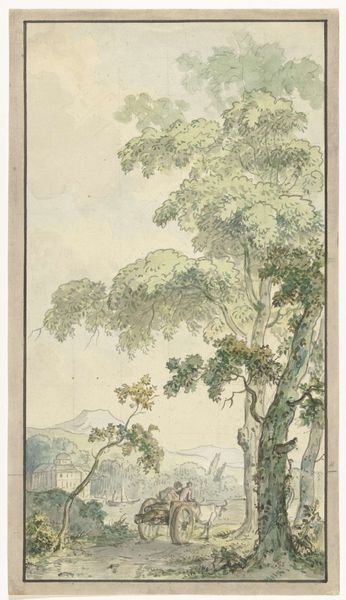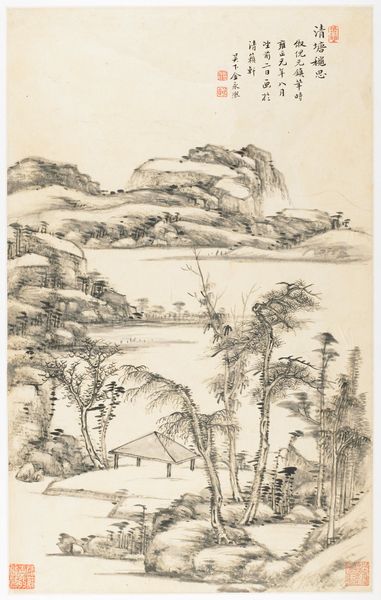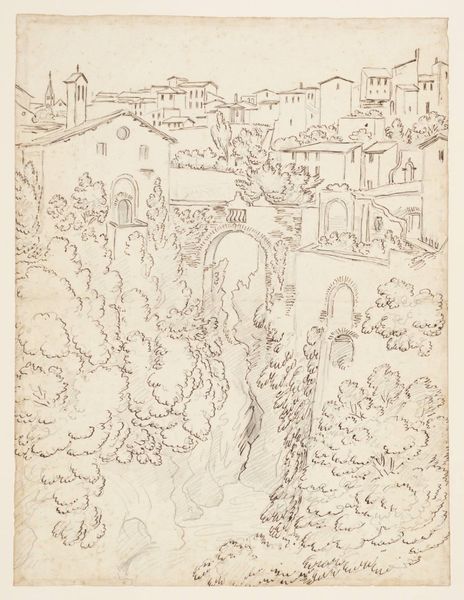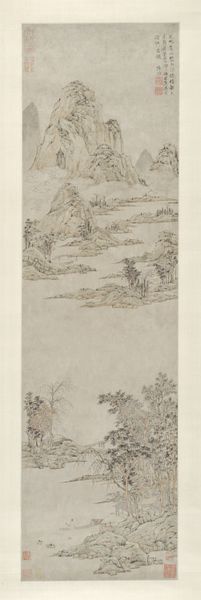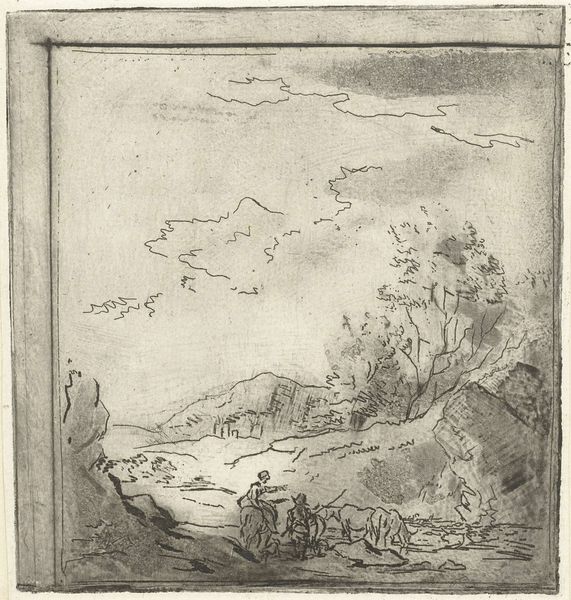
drawing, painting, paper, watercolor, ink, pencil
#
drawing
#
neoclacissism
#
painting
#
landscape
#
paper
#
watercolor
#
ink
#
coloured pencil
#
pencil
#
watercolor
Dimensions: height 99 mm, width 67 mm
Copyright: Rijks Museum: Open Domain
Jurriaan Andriessen created this landscape with a round temple using pen and watercolor. At a time when the Dutch art world was dominated by genre painting and portraiture, Andriessen’s landscapes offered a different perspective on the environment. Here, we see a classical temple in a landscape. The cultural elite of the Netherlands in the 18th century embraced neoclassicism, looking to antiquity as a model for their architecture, art, and politics. This interest was about more than just aesthetics, as the Dutch Golden Age was long over. By evoking the ideals of republican Rome, Andriessen's image subtly comments on the politics of his own time. The classical temple suggests a desire for stability, order, and virtue at a time of political and economic change. To understand this work better, scholars can research the cultural and political context of the 18th-century Netherlands, study the architecture of the period, and analyze the philosophical texts that informed the neoclassical movement. Andriessen's landscape encourages us to think about the relationship between art, culture, and politics.
Comments
No comments
Be the first to comment and join the conversation on the ultimate creative platform.
